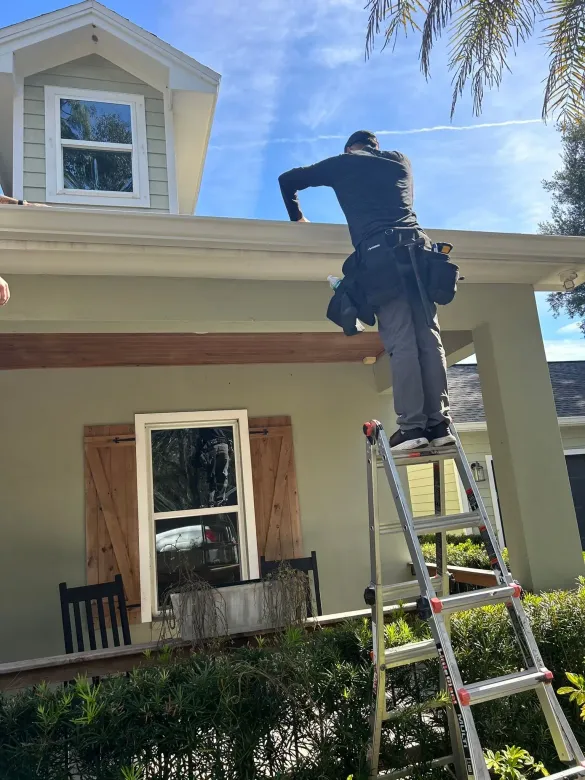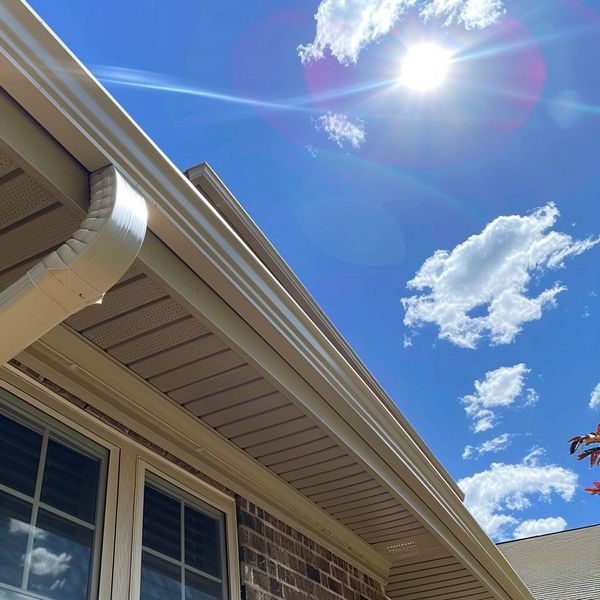When it comes to maintaining your home, one aspect that often gets overlooked is the gutter system. Gutters play a critical role in diverting rainwater away from your roof and foundation, preventing a myriad of issues such as water damage, mold growth, and even structural problems. However, when it comes to installing or replacing gutters, homeowners often face a dilemma: should they tackle the project themselves or hire a professional? In this comprehensive guide, we will explore the DIY Gutter Installation vs Professional Install: Pros and Cons, providing insights to help you make an informed decision.
Understanding the Gutter Installation Process Explained
What Are Gutters? Gutters are channels installed along the eaves of a roof that collect rainwater and direct it away from your home's foundation. They come in various materials including aluminum, vinyl, copper, and steel.
The Importance of Gutters Without gutters, rainwater can cause significant damage to your home's structure. Water pooling around the foundation can lead to cracks and flooding in basements. Additionally, improper drainage can cause erosion of landscaping and siding damage.

The Gutter Installation Process Step-by-Step
Measure Your Roof Line: Accurately measuring the length where gutters will be installed is essential. Choose Your Material: Select between seamless aluminum, vinyl, or copper based on durability and aesthetics. Purchase Necessary Supplies: Gather all tools and materials required for installation. Prepare the Area: Clear debris from existing gutters if you're doing a replacement. Install Hangers: Secure hangers to support the gutter system. Cut Gutters to Length: Trim your gutter sections to fit measured lengths. Attach End Caps: Ensure water doesn’t leak out of the ends. Seal Joints: Use sealant at joints to prevent leaks. Install Downspouts: Direct water away from your foundation by attaching downspouts.By understanding this process thoroughly, you can better assess whether DIY installation fits your skill set.
Signs You Need a Gutter Replacement
It's crucial to know when it's time for new gutters:
- Cracks and Splits: Visible cracks indicate that water may escape rather than flow properly through the system. Rust Spots: Rust is a sign of corrosion which significantly diminishes gutter lifespan. Sagging or Pulling Away From Roofline: This could mean hangers are failing or there’s too much weight from debris accumulation. Water Damage in Basement or Foundation: Persistent moisture problems are often linked back to faulty gutters.
Recognizing these signs early can save you costly repairs later on.
Choosing the Right Gutter System for Your Home
Selecting the right gutter system involves considering several factors:
Material Options
- Aluminum: Lightweight with good durability; rust-resistant but may dent easily. Vinyl: Cost-effective but less durable; great for DIY projects due to ease of installation. Copper: Offers aesthetic appeal but requires maintenance due to patina development over time. Steel: Strong but prone to rust; ideal for heavy-duty applications.
- K-style vs Half-round: K-style has more capacity while half-round offers a classic look.
- Seamless minimizes leaks since it’s custom-fabricated onsite but costs more than sectional systems.
By evaluating these factors against your budget and home style, you can make an informed choice about which gutter system suits you best.
How Long Does Gutter Installation Take?
The duration of the installation process depends on several variables:

- For DIY enthusiasts: Basic installations might take anywhere from 4-8 hours depending on experience level and roof complexity. For professionals: A team may complete installations within 2-4 hours due to efficiency and expertise.
It is also essential to factor in weather conditions as rain or high winds could delay installation times significantly.
Gutter Installation Costs Broken Down
Understanding costs associated with gutter installation will help you plan effectively:
| Cost Element | Estimated Price Range | |-----------------------------|--------------------------| | Materials (per linear foot) | $3 - $30 | | Labor (professional install) | $70 - $100/hour | | Additional Accessories | $5 - $50 per piece | | Removal of Old Gutters | $1 - $3 per linear foot |
Keep in mind that while DIY may seem cheaper upfront, professional installs often include warranties which can save money long-term on repairs.
DIY Gutter Installation vs Professional Install
Pros of DIY Installation
Cost Savings: You avoid labor costs by doing it yourself. Flexible Timing: Work at your convenience without scheduling conflicts with contractors. Skill Development: Learn valuable skills that can be useful for future home improvement projects.Cons of DIY Installation
Time-Consuming: Requires considerable effort especially if you're inexperienced. Potential Mistakes: Errors during installation could lead to expensive repairs later on. Safety Risks: Climbing ladders poses risks if proper safety measures aren’t taken.Pros of Professional Installation
Expertise: Experienced installers ensure proper installation reducing risk of future issues. Warranty Protection: Many companies offer warranties covering labor and materials for peace of mind. Efficiency: Professionals typically complete installations faster than amateurs.Cons of Professional Installation
Higher Initial Costs: Labor charges add up quickly compared to DIY options. Availability Issues: Scheduling might be challenging based on contractor workload.In conclusion, both options have distinct advantages and drawbacks that depend largely on personal circumstances including budget constraints and individual skill level.
FAQs
1. Can I install gutters myself?
Yes! With basic tools and some research into proper gutter company techniques, many homeowners successfully install their own gutters.
2. How often should I clean my gutters?
It's recommended to clean gutters at least twice a year—once in spring after blooming season and once in fall after leaves have fallen.
3. What happens if I don't replace clogged gutters?
Neglecting clogged gutters can lead to water damage in your home’s foundation as well as cause landscaping erosion over time.
4. Are seamless gutters better than sectional ones?
Seamless gutters reduce potential leak points due to fewer seams; they tend to be more durable long-term compared with sectional options.
5. How do I know what size gutters I need?
The size depends on your roof's pitch, area receiving rainfall—typically five-inch or six-inch widths work best for residential homes based on local rainfall patterns.
6. What is gutter apron flashing?
Gutter apron flashing is an additional piece installed beneath shingles where they meet the gutter ensuring water flows directly into them without running behind causing rot.
Conclusion
Deciding between DIY Gutter Installation vs Professional Install ultimately boils down to assessing your comfort level with tools, available time for such projects, budget constraints, as well as specific needs pertaining to your roofing structure!
Whether you choose self-installation or enlist https://www.mrgutterinc.net/ seamless gutters professional help—ensuring proper drainage through effective gutter management is vital for protecting not just aesthetics but longevity overall!
Remember—the right choice today leads not only towards safeguarding against potential damages down-the-line but also enhances curb appeal while giving homeowners peace-of-mind knowing their property remains secure!